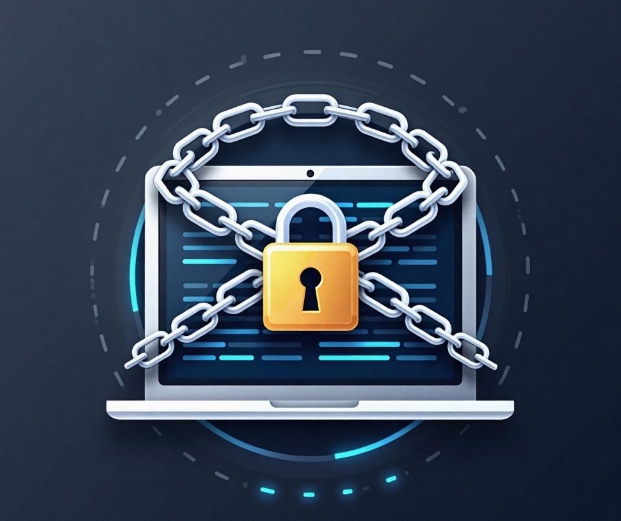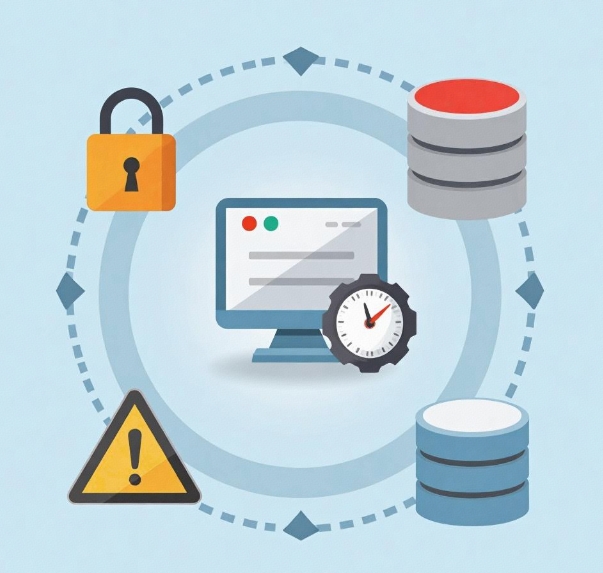Security in E-commerce Development: Preventing Data Breaches and Attacks
- latest articles
- 1.DApp Development & Customization: Merging Diverse Market Needs with User Experience 2.Analysis of the Core Technical System in DApp Project Development 3.How to achieve cross-chain interoperability in Web3 projects? 4.How does the tokenization of points reconstruct the e-commerce ecosystem? 5.How to Set and Track Data Metrics for a Points Mall? 6.What is DApp Development? Core Concepts and Technical Analysis 7.Inventory of commonly used Web3 development tools and usage tips 8.Development of a Distribution System Integrated with Social E-commerce 9.Six Key Steps for Businesses to Build a Points Mall System 10.What is DApp Development? A Comprehensive Guide from Concept to Implementation
- Popular Articles
- 1.Future Trends and Technology Predictions for APP Development in 2025 2.Analysis of the DeFi Ecosystem: How Developers Can Participate in Decentralized Finance Innovation 3.From Zero to One: How PI Mall Revolutionizes the Traditional E-commerce Model 4.DAPP Development | Best Practices for Professional Customization and Rapid Launch 5.Recommended by the Web3 developer community: the most noteworthy forums and resources 6.From Cloud Computing to Computing Power Leasing: Building a Flexible and Scalable Computing Resource Platform 7.How to Develop a Successful Douyin Mini Program: Technical Architecture and Best Practices 8.Shared Bike System APP: The Convenient Choice in the Era of Smart Travel 9.How to Create a Successful Dating App: From Needs Analysis to User Experience Design 10.From Design to Development: The Complete Process of Bringing an APP Idea to Life
With the development of the internet, e-commerce has become a vital component of modern business. Online shopping malls, in particular, provide a convenient platform for both consumers and merchants, promoting the globalization of commerce. However, in this digital age, security issues have become the most critical aspect of mall development. Data breaches and cyber attacks not only harm users' interests but can also damage the mall's reputation and even lead to legal liabilities. Therefore, ensuring data security, preventing data leaks, and defending against attacks during mall development have become core issues that all developers and merchants must prioritize.
This article will explore security issues in mall development, focusing on how to prevent data breaches and cyber attacks, propose practical security measures, and discuss the challenges and solutions in security design and development.
I. The Necessity of Mall Security
In e-commerce platforms, users' personal information, payment details, and order data are all sensitive. The leakage or loss of such data can not only cause financial losses for users but also damage merchants' credibility and lead to legal disputes. Especially in the era of big data, with increasingly sophisticated hacking techniques, mall developers must recognize the importance of data security.
User Privacy Protection: E-commerce platforms collect a large amount of user personal data, including names, addresses, phone numbers, and bank card information. If this data is leaked, it could be used for malicious activities such as identity theft and fraud, causing significant distress to users.
Transaction Security: The core of an e-commerce platform is payment transactions. Each payment transaction involves substantial financial information. If the mall does not implement effective security measures, hackers could exploit vulnerabilities to carry out attacks, steal funds, and harm consumers' interests.
Merchant Trade Secrets: Sales data, inventory information, and pricing strategies on the mall platform constitute trade secrets. If this data is leaked, it could impact the merchant's market competitiveness and even lead to adjustments in competitors' strategies.
Therefore, mall developers must prioritize security to ensure that all aspects of the mall platform can guard against potential threats.
II. Common Security Threats in Mall Development
To better address security issues in mall development, understanding common security threats is crucial. Here are several typical security threats for e-commerce platforms:
Data Breaches: Data breaches typically occur when user or transaction data in the mall is unencrypted or improperly stored. Hackers gain access to backend data through vulnerabilities or malware, leading to the exposure of sensitive information. Data breaches can damage the mall's reputation and user trust, resulting in financial losses for merchants.
SQL Injection Attacks: SQL injection attacks involve hackers inserting malicious SQL statements into input fields to illegally access the database, thereby stealing or altering data. Since e-commerce platforms frequently interact with databases, such attacks pose a significant threat.
Cross-Site Scripting (XSS) Attacks: XSS attacks occur when hackers insert malicious scripts into web pages, which then execute in the victim's browser, stealing user information, performing unauthorized actions, or implanting malware.
Denial of Service (DDoS) Attacks: DDoS attacks flood the mall server with excessive malicious requests, overloading it and making the mall inaccessible. Such attacks are typically aimed at paralyzing the mall website, preventing normal transactions.
Man-in-the-Middle (MITM) Attacks: MITM attacks involve hackers intercepting and altering data transmission between users and the mall platform to steal sensitive information such as login credentials and payment details.
III. Security Measures to Prevent Data Breaches and Attacks
To address security issues in mall development, developers need to implement a series of protective measures to enhance the platform's security. Here are some effective security measures:
1. Data Encryption
Data encryption is a key method to prevent data breaches. Through encryption, malls can ensure that user data remains inaccessible during transmission and storage. Common data encryption techniques include:
Transport Layer Security (TLS/SSL): To prevent data from being stolen or tampered with during transmission, mall platforms should use SSL/TLS protocols to encrypt all user requests and responses, ensuring secure data transfer between client and server.
Database Encryption: Malls store large amounts of sensitive information, such as user passwords and payment details, in databases. Encrypted storage can effectively prevent data breaches. Common database encryption techniques include AES (Advanced Encryption Standard) and RSA encryption.
End-to-End Encryption: In addition to transport layer encryption, it is crucial to ensure data is encrypted at the application layer. For example, users' payment and personal information should be encrypted at the database level to avoid exposure of sensitive data.
2. Preventing SQL Injection
SQL injection attacks often occur due to developers failing to rigorously validate and filter user input. To prevent SQL injection, mall platforms can adopt the following measures:
Using Prepared Statements: Prepared statements separate query parameters from SQL code, effectively preventing malicious SQL injection attacks. Many programming languages and databases support this technique, such as PDO in PHP and PreparedStatement in Java.
Strict Input Validation: Rigorous validation and filtering of user input is an effective way to prevent SQL injection. Mall developers should ensure all user input is validated to prevent illegal characters from entering the system.
Principle of Least Privilege: Database users should be granted minimal permissions to avoid dangerous operations if an attacker succeeds.
3. Preventing XSS Attacks
Cross-site scripting attacks steal user data or perform malicious operations by inserting malicious scripts into web pages. To prevent XSS attacks, mall platforms can take the following measures:
Output Encoding: Encode user input to ensure that HTML or JavaScript code is not executed by the browser. For example, escape special characters using HTML entities.
Input Validation: Filter user input to remove unnecessary HTML tags and JavaScript code.
Using Content Security Policy (CSP): CSP is a browser security mechanism that restricts the sources of executable scripts and resources on web pages, effectively preventing XSS attacks.
4. Preventing DDoS Attacks
DDoS attacks overload the mall server with excessive malicious requests, making the website inaccessible. To prevent DDoS attacks, mall platforms can adopt the following measures:
Using CDN Services: Content Delivery Networks (CDNs) distribute traffic across multiple global nodes, reducing server load and effectively countering DDoS attacks.
Load Balancing: Distribute user requests across different servers using load balancing technology to reduce the burden on a single server and enhance the mall platform's resilience to attacks.
Traffic Filtering: Use firewalls and Intrusion Detection Systems (IDS) to filter suspicious traffic, identifying and blocking malicious requests.
5. Strengthening Authentication and Permission Management
Mall platforms should implement strict authentication mechanisms to ensure only legitimate users can access sensitive information and perform payment operations. Common authentication measures include:
Multi-Factor Authentication (MFA): MFA requires users to provide multiple forms of verification during login, such as passwords, SMS codes, or fingerprint recognition, thereby enhancing account security.
Access Control: Implement strict permission management on the mall platform, differentiating permissions based on roles to ensure only authorized personnel can access sensitive data and perform specific operations.
IV. Conclusion
Security in mall development is a multi-dimensional challenge, encompassing everything from data encryption to authentication, and from preventing SQL injection to defending against DDoS attacks. Developers need to adopt comprehensive security measures, prioritizing security from the design phase through development and into operation. Only through careful design and protection can mall platforms provide a safe and reliable shopping environment, safeguarding user privacy and transaction security, and enhancing the mall's brand reputation.
As technology continues to evolve, security threats also change. Mall developers must stay updated with new security technologies and protective measures, maintaining sharp security awareness to ensure the platform can handle increasingly complex cybersecurity challenges.
-

How does the tokenization of points reconstruct the e-commerce ecosystem?
With the continuous advancement of internet technology and the gradual prolifera···
-

How to Set and Track Data Metrics for a Points Mall?
With the rapid development of the e-commerce industry, points malls, as a common···
-

Development of a Distribution System Integrated with Social E-commerce
With the rapid development of internet technology, the e-commerce industry has e···

 Blockchain
Blockchain












